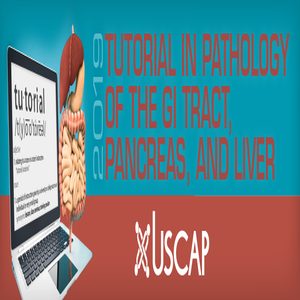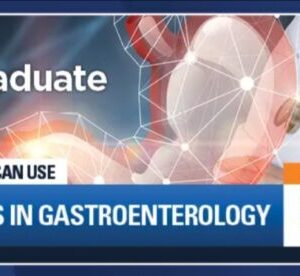No products in the cart.
Gastroenterology, Pathology
USCAP Tutorial in Pathology of the GI Tract, Pancreas and Liver 2019 (CME VIDEOS)
$25.00
Course Description
Gastrointestinal pathology emerged as a subspecialty in the early 1980s, coincident with the development of endoscopy and mucosal biopsy for diagnosis and management of patients with gastrointestinal disorders. Since that time, changes in tissue acquisition techniques and ancillary testing have drastically transformed the discipline; current practice bears little resemblance to that of our mentors. The past two decades have seen an explosion in the number and types of biopsy samples pathologists encounter in daily practice. Virtually every part of the tubular gut is now amenable to visualization and sampling, and most liver biopsies are performed by radiologists who utilize small-caliber needles. As a result, pathologists are expected to generate comprehensive and accurate differential diagnoses for a variety of inflammatory and neoplastic disorders based on limited biopsy material. Pathologists must be able to hone in on key features in order to narrow the differential diagnosis and facilitate patient management.
Target Audience
Practicing academic and community pathologists, and pathologists-in-training
Learning Objectives
Upon completion of this educational activity, learners will be able to:
Improve criteria for interpretation of mismatch repair protein immunohistochemistry
Streamline utilization of ancillary tests in evaluation of lymphoid infiltrates of the GI tract
Formulate an appropriate differential diagnosis for chronic hepatitis
Distinguish between medication-related injury and other inflammatory conditions of the GI tract
Explore various neoplasms that affect the gastrointestinal tract, liver and pancreas
Continuing Medical Education and Continuing Certification
The United States and Canadian Academy of Pathology is accredited by the Accreditation Council for Continuing Medical Education (ACCME) to provide continuing medical education for physicians.
The United States and Canadian Academy of Pathology designates this enduring material for a maximum of 27.25 AMA PRA Category 1 CreditsTM. Physicians should claim only the credit commensurate with the extent of their participation in the activity.
USCAP is approved by the American Board of Pathology (ABPath) to offer Self-Assessment credits (SAMs) and Lifelong Learning (Part II) credit for the purpose of meeting the ABPath requirements for Continuing Certification (CC). Registrants must take and pass the post-test in order to claim SAMs credit. Physicians can earn a maximum of 20.5 SAM/Part II credit hours.
Disclosures
The faculty, committee members, and staff who are in position to control the content of this activity are required to disclose to USCAP and to learners any relevant financial relationship(s) of the individual or spouse/partner that have occurred within the last 12 months with any commercial interest(s) whose products or services are related to the CME content. USCAP has reviewed all disclosures and resolved or managed all identified conflicts of interest, as applicable.
The following faculty reported a relevant financial relationship: David S. Klimstra, MD: Consultant, Paige.AI
The following faculty and planners reported no relevant financial relationships: Rhonda Yantiss, MD; Henry D. Appelman, MD; Wendy L. Frankel, MD; John A. Hart, MD; Elizabeth A. Montgomery, MD
USCAP staff associated with the development of content for this activity reported no relevant financial relationships.
Topics/Speaker:
A Multidisciplinary Approach to Polyposis Syndromes and Heritable Cancer
A Practical Approach to the Blue Portal Tract in 2019
A Practical Approach to the Evaluation of Liver Tumor Biopsies
Acute and Ischemic Colitis
Adenomas and Other Lumps and Bumps
Adenomas Case Presentations
Biliary Disease and Cholestasis
Biomarker Evaluation in Upper Gastrointestinal Neoplasia
Case Presentations #1 – John A. Hart, MD
Case Presentations #1 – Lawrence J. Burgart, MD
Case Presentations #2 – John A. Hart, MD
Case Presentations #2 – Lawrence J. Burgart, MD
Challenging Issues in Colon Cancer Staging
Chronic Colitis, IBD, and Pouchitis
Donor Liver Biopsies What To Say in the Middle of the Night
Esophageal Early Neoplasia
Liver Anatomy and Histology Patterns of Injury
Lymphoproliferative Diseases of the Gut A Survival Guide for the General Pathologist (from a General Pathologist)
Mesenchymal Tumors of the GI Tract
Mucinous Appendiceal Tumors and Pseudomyxoma Peritonei
Pancreatic Neuroendocrine Neoplasms Classification, Prognostication, and Differential Diagnosis
Periampullary Neoplasms
Pitfalls in the Evaluation for Lynch Syndrome
Reflux, Allergy, and Other Forms of Esophageal Injury
Some Gastric Lesions and The Company They Keep
Some Problem Gastric Polyps Be Sure to Look at the Background Mucosa
Some Spectacular Cases (Some Zebras and Rare Birds in Gastrointestinal Pathology) – Elizabeth A. Montgomery, MD
Steatosis and Steatohepatitis
The Anus Sometimes 88301 Doesn’t Do It Justice
The Biopsy Diagnosis of Gastric Cancer
The Diagnosis of Pancreatic Ductal Adenocarcinoma and Its Precursor Lesions
Things to Think About When Considering Celiac Disease
Tools for Primary Site Determination in Metastatic Adenocarcinoma
Ulcerative Colitis Stuff
Working Up Polyposis Cases
Original release date: December 16, 2019
Access to this course expires on: August 25, 2022





